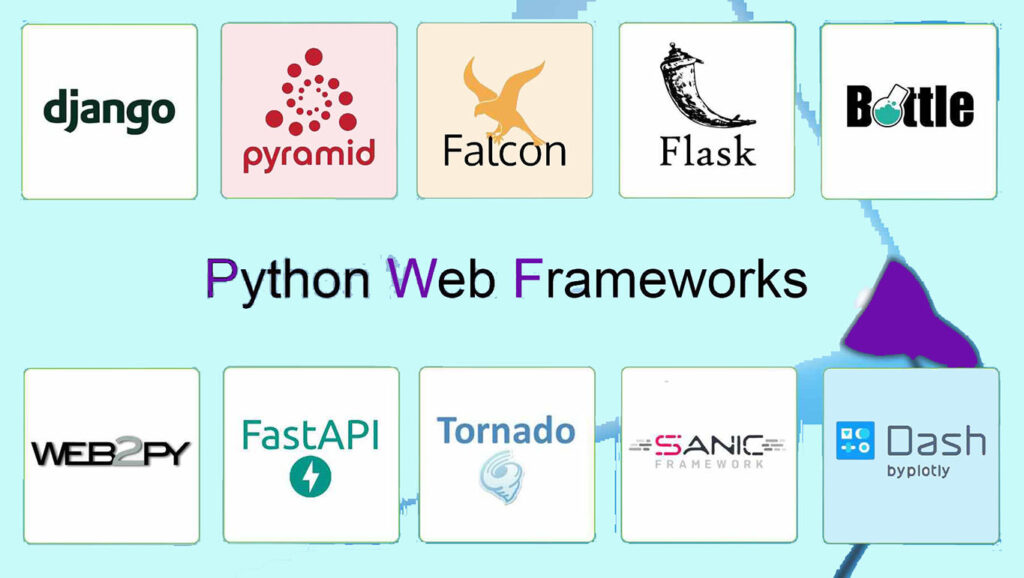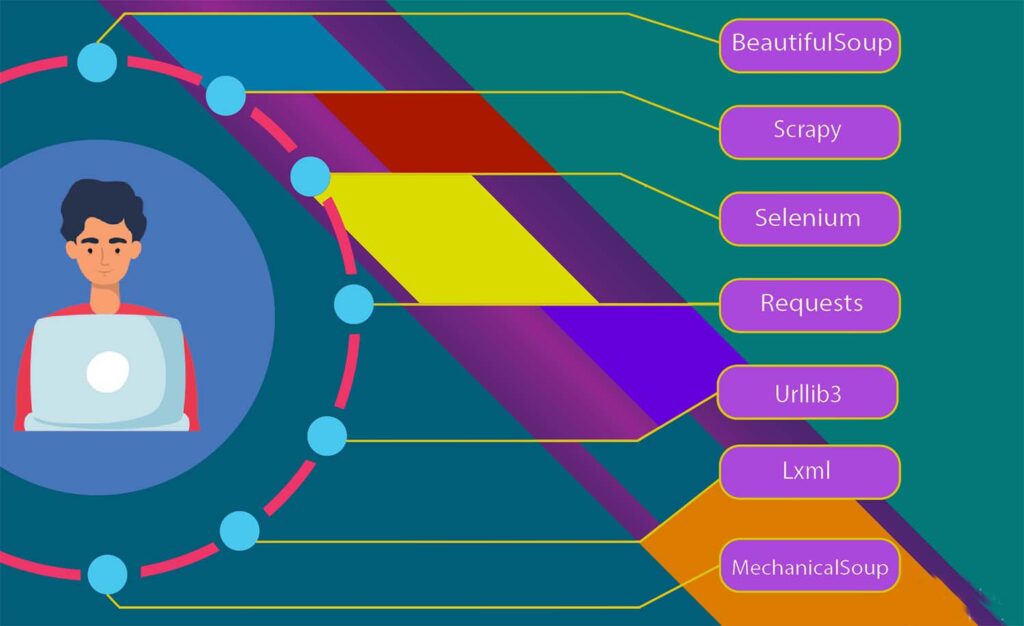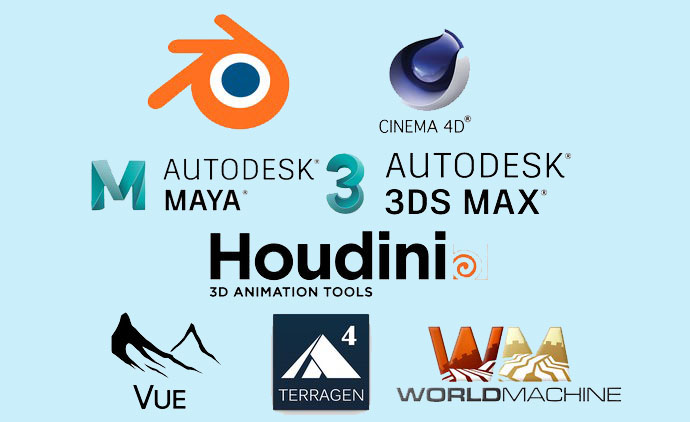Python, often hailed as the programming world’s Swiss Army knife, has found its place in countless real-world applications. Its adaptability, readability, and rich library ecosystem make it a versatile choice for developers, data scientists, and even those venturing into the realm of artificial intelligence. In this article, we’ll explore the myriad applications of Python in real world while adding a sprinkle of extra insights.
Table of Contents
Introduction
Python, the world’s most popular programming language, continues to grow in prominence. But what’s Python used for in the real world? In this article, we’ll explore seven practical applications of this versatile language, delving into the reasons behind Python’s popularity, its learning curve, and the job opportunities it presents.
What is Python?
Python is an open-source, high-level, general-purpose programming language. Let’s break down what each of these characteristics means:
- Open-source: It’s free and open for further improvements, fostering collaboration among developers.
- High-level: Python’s syntax is human-friendly, making it easy to read and write.
- General-purpose: It can be used to create various types of programs, from web applications to data analysis tools.
Python finds extensive use in data science, machine learning, web development, software development, and more.
Why is Python So Popular?
Python’s popularity can be attributed to several key advantages:
- Intuitive Syntax: Python’s syntax resembles natural language, making it accessible to newcomers.
- Readability: The language is easy to write, read, and debug.
- Rich Standard Library: Python offers a vast standard library and a wealth of well-documented additional libraries.
- Free and Community-Driven: It’s freely available for individuals and businesses, with a thriving developer community.
- Versatility: Python can be integrated into various projects and is suitable for solving complex problems.
- General-purpose: It finds applications across diverse domains.
What is Python Used For? 7 Python Uses
- Python for Data Analysis: In today’s data-driven world, Python excels in gathering, manipulating, and analyzing data. Libraries like pandas and NumPy provide powerful tools for data cleaning, wrangling, statistics, and visualization.
- Python for Data Visualization: Python offers a range of visualization tools, including matplotlib and seaborn, for creating compelling data representations.
- Python for Machine Learning: Python is at the core of machine learning tasks, enabling the development of models for predictive analytics and pattern recognition. Libraries like scikit-learn, Keras, TensorFlow, and PyTorch simplify machine learning.
- Python for Software Development: Python plays a significant role in software development, from prototyping to building complex applications, thanks to its flexibility and power. It’s used for creating audio or video programs, APIs, GUIs, and more.
- Python for Web Development: Python is employed in the back-end development of websites, facilitating data processing, database access, content management, and security. Frameworks like Django and Flask simplify web development.
- Python for Task Automation/Scripting: Python is a valuable tool for automating repetitive tasks, including file manipulation, web scraping, and sending notifications. It enhances efficiency and saves time.
- Miscellaneous Python Uses: Python has a myriad of unconventional uses, including stock market monitoring, web scraping, task lists, chatbots, and generating random content.
Top 10 Uses of Python in Real World
- Web Development
- Data Science
- Artificial Intelligence and Machine Learning
- Enterprise Applications
- Education Sector
- Web Scraping Applications
- Game Development
- Software Development
- Desktop GUI
- Operating Systems
1. Web Development
Python is renowned as the go-to language for web development. Its significance in this domain cannot be overstated.

Python is the go-to choice for web development, offering an array of frameworks like Django, Pyramid, Flask, and Bottle. These frameworks, accompanied by Python’s standard libraries, simplify tasks such as content management, database interaction, and protocol interfacing. Python’s Package Index is a treasure trove of libraries like Requests, BeautifulSoup, Paramiko, Feedparser, and Twisted Python.
Extra Insight: Python’s web development prowess lies in its exceptional security, scalability, and flexibility.
Related Content: Flask vs. Django vs. FastAPI: When to Choose which ?
2. Data Science
Data science is undoubtedly one of the most coveted skill sets in today’s job market. It is a skill highly sought after across various industries, including IT, manufacturing, and eCommerce. Python plays a pivotal role in data science. Its rich library ecosystem, featuring stalwarts like Pandas, TensorFlow, and NumPy, empowers data scientists to extract valuable insights from data effortlessly. Additionally, libraries like Matplotlib and Seaborn facilitate data visualization through captivating graphs and charts. It wouldn’t be an exaggeration to claim that Python is the cornerstone of any data science professional’s toolkit.
Extra Insight: Python’s role in scientific computing goes beyond its syntax; it’s the backbone of numerous data-driven applications.
Related Content: Top Data Science Libraries in Python – To the point Explanation
3. Artificial Intelligence and Machine Learning
Python shines brightly in the realm of Artificial Intelligence (AI). It is a stable language capable of handling the complex computations required for building machine learning models. Python reigns supreme in the realm of AI and ML, thanks to its simplicity, robust library support, and an active community. Packages like SciPy, Pandas, Seaborn, Keras, TensorFlow, Scikit-learn, and NumPy empower data scientists. Furthermore, Python plays a pivotal role in numerous AI solutions, encompassing advanced computing, image recognition, data processing, and more.

Extra Insight: Python’s readability and concise code make it an ideal choice for developing intricate AI and ML algorithms.
4. Enterprise Applications:

Enterprise applications are designed to cater to the collective needs of organizations rather than individual users. Python is a favored choice for developing enterprise applications due to its robustness in handling concurrent database requests. While the specific applications of Python in the enterprise domain may vary, its core attributes, such as readability, functionality, and scalability, remain consistent.
Python’s scalability, flexibility, and readability are essential for enterprise-level software. Tools like Odoo and Tryton offer comprehensive solutions for business application development.
Extra Insight: Python’s security features are a standout in business applications, prioritizing information security.
5. Education Sector
Python’s versatility extends to the development of online courses and educational programs. It serves as an ideal programming language for beginners, as its syntax closely resembles English. Python provides novices with a standard library and a wealth of learning resources, smoothing the learning curve. This is a key reason why Python is the preferred language for both basic and advanced educational program development.

Python’s beginner-friendly syntax and short learning curve make it a staple in educational programs. Leading online platforms like Coursera, Udemy, edX, and Harvard offer Python courses.
Extra Insight: Python’s versatility transcends beginner education; professional developers worldwide rely on it.
6. Web Scraping Applications

Web scraping involves the extraction of vast datasets to inform decision-making and gain customer insights. Thanks to Python’s prowess in processing large volumes of data, it excels in creating effective web scraping solutions. Python emerges as the clear winner in this arena, capable of managing extensive data with grace.
Python’s web scraping capabilities are a boon for extracting data from websites. Tools like BeautifulSoup, MechanicalSoup, Scrapy, LXML, Python Requests, Selenium, and Urllib simplify the process.
Extra Insight: Python’s concise syntax and robust libraries make web scraping a breeze, benefiting fields like job listings and research.
7. Game Development
Python has left an indelible mark on the gaming industry, making it a natural inclusion in the top 10 uses of the language. Notably, the iconic game “Battlefield 2,” which captivated audiences in the early 2000s, was developed using Python. Python’s impressive roster of frameworks, including Pygame, PyKyra, Pyglet, PyOpenGL, Kivy, Panda3D, Cocos2D, and more, underscores its significance in game development.

Python extends its arms into the gaming world with libraries like PySoy and PyGame, known for creating interactive games. Iconic titles like Battlefield 2, Frets on Fire, and Disney’s Toontown Online owe their existence to Python.
Extra Insight: Python isn’t just for game creation; it’s also used to develop tools for tasks like level design and dialog tree creation, enhancing the overall game development process.
8. Software Development
Python is a steadfast companion for software developers. It simplifies the software development process, even for complex applications. Python finds utility in project management, serves as a support programming language, and aids in version control and testing. Its versatility lends itself seamlessly to various phases of software development.
Python simplifies software development across various domains, from scientific computing to web and desktop applications. Tools like SCons, Buildbot, Apache Gump, Roundup, and Trac cater to specific development needs.
Extra Insight: Python’s code reusability and readability make it a favorite among software developers at Google, Reddit, Netflix, and beyond.
9. Desktop GUI
Python emerges as a formidable contender in desktop GUI development. With its simplicity, stability, ease of learning, open-source nature, and platform independence, Python is the ideal choice for crafting desktop GUIs.
Python’s modular architecture and cross-platform compatibility make it an excellent choice for desktop Graphical User Interfaces (GUIs). Frameworks like PyQt, PyGtk, Kivy, Tkinter, WxPython, PyGUI, and PySide streamline GUI development.
Extra Insight: Python’s English-like syntax enhances code readability, a valuable asset in GUI development.
10. Operating Systems
The combination of Python’s potency and C’s power has birthed numerous operating systems. Python’s role in crafting operating systems was solidified with the advent of Ubuntu’s Ubiquity, Red Hat’s Anaconda, and Fedora. Python-fueled operating systems power billions of computers globally.
Extra Insight: Python’s contribution to operating systems ensures smoother user experiences on Linux distributions.
11. Image Processing and Graphic Design Applications
Python’s versatility extends to image processing and graphic design, with contributions to 2D imaging software like Inkscape, GIMP, Paint Shop Pro, and Scribus. It also plays a role in 3D animation packages such as Blender, Houdini, 3ds Max, Maya, Cinema 4D, and Lightwave.

Extra Insight: Python’s adaptability shines in creative fields, bridging the gap between art and technology.
Why Learn Python?
Learning Python offers various benefits:
- Career Opportunities: Python proficiency opens doors to diverse career paths.
- Task Automation: It streamlines everyday tasks, boosting productivity.
- Stand Out: It differentiates you in job applications, even for roles that don’t explicitly require Python.
- High Demand: Python-related professions are well-paid and in high demand, with continuous growth expected.
Related Content: Beginners Python exercises with sloution code
How Long It Takes to Learn Python
The time required to learn Python depends on your prior coding experience, goals, motivation, and study time. Here’s a rough estimate:
- Basics: As few as 15 hours for beginners.
- Data Science or Statistics: Around 4 hours for basic proficiency.
- Data Analyst Proficiency: Up to 32 hours with a structured approach.
Your journey with Python is adaptable to your ambitions and commitment. How motivated you are in learning python. And one more thing do not rush for it. Take it slowly and digest it. Its not like you take 11 hour course in one day. This will not help you and also this will demotivate you and you start thinking programing is not for you.
What Jobs Need Python?
Several professions directly require Python skills, including:
- Data Scientist
- Data Analyst
- Data Engineer
- Machine Learning Engineer
- Data Journalist
- Data Architect
- Full-stack Web Developer
- Back-end Web Developer
- DevOps Engineer
- Software Engineer
Additionally, Python is valuable for tasks in other domains, such as business analysis, finance, and scientific research.
Conclusion
Python’s versatility extends its reach across various industries and applications, from data analysis to web development and beyond. Whether you’re launching a new career or enhancing your current role, Python’s broad utility and demand make it a valuable skill to acquire. So, embrace Python and explore the endless possibilities it offers in the world of programming and technology.

